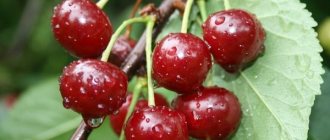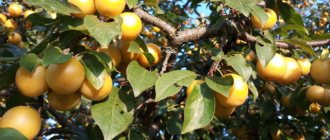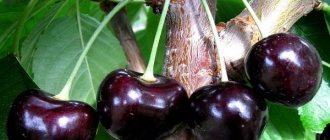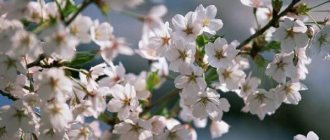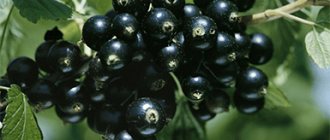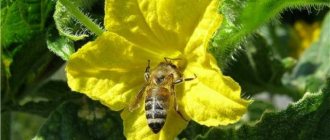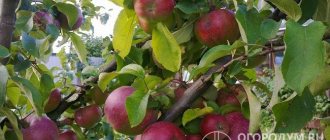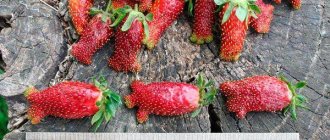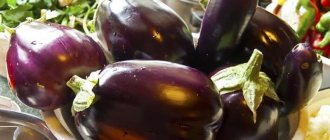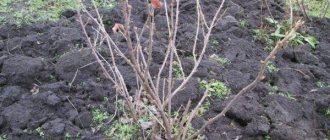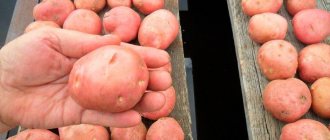Description of the variety
The Shokoladnitsa variety is medium-ripening, frost-resistant, and tolerates drought well. It belongs to the Morel cherries, that is, its ripe fruits are almost black in color and have highly colored juice. The tree grows low, about 2.5 m. The crown is back-pyramidal, spreading, the apex is pointed. The branches are straight, brown, covered with a gray coating. The leaves are green, matte, pointed. The buds are cone-shaped, tightly pressed to the shoots. Cherry blossoms bloom in mid-May. The flowers are simple, white, collected in inflorescences of three to five pieces.
Chocolate cherry is partially self-fertile, but for best yield it requires a pollinator. The following varieties are well suited for this role:
- Vladimirskaya;
- Turgenevka;
- Bottle;
- Lyubskaya.
Shokoladnitsa's berries are dark, sweet with sourness and bitterness, weighing 3.5 g, ripen in mid-July. The sugar content in fruits is 12%. When planting an annual seedling, the first harvest can be expected in 4-5 years.
The variety is recommended for cultivation in the Moscow, Tula, Ryazan, Bryansk, Vladimir and Smolensk regions.
Description
The height of an adult tree reaches a maximum of 2-2.5 meters. Carved oval leaves form a semi-dense crown in the form of an inverse pyramid. The lower branches dry out as they grow, raising the crown above the ground. The main trunk is covered with glossy brown bark, the shoots are grayish-brown.
When flowering, snow-white umbrella-shaped inflorescences appear among the matte dark green leaves. The flowering period occurs in May (more exact dates depend on weather conditions and growing region).
On a note. Shokoladnitsa is a self-fertile variety - it does not need a pollinator. However, if possible, it is advisable to plant it next to other cherry varieties, which will help to obtain maximum fruit set after flowering.
Berries are formed on perennial shoots. To prevent the crown from thickening, thinning pruning is carried out. Fruiting starts from 4 years after planting the seedling. The maximum growing season does not exceed 20 years.
How to choose seedlings
You can plant grafted or self-rooted trees. When choosing planting material, follow the following rules:
- straight center conductor;
- the height of the seedling is about a meter, and the diameter of the trunk is from 1.5 to 2.5 cm;
- the root system is well developed, the roots are living, moist, flexible, whitish-green in color;
- a two-year-old seedling must have three or four lateral skeletal branches;
- there should be no leaves on the branches;
- absence of damage, signs of disease, presence of pests;
- if the seedling is grafted, there are no sagging at the junction of the rootstock and scion.
Before planting, the roots of the seedling are dipped in a liquid mixture of manure and clay, the so-called mash. This procedure promotes better plant survival.
Seedlings should always be purchased from specialized nurseries, from trusted suppliers, so as not to encounter contaminated seed, a completely different variety, a sterile specimen, or a wild plant.
Experienced gardeners prefer to buy Shokoladnitsa seedlings in the fall, when there is a wider choice. To preserve the cherry until spring, it is buried in the grooves, and spruce branches are placed on top to protect it from rodents.
We organize care
In order for a tree to develop normally, it needs to be provided with high-quality and complete care.
Watering
For watering it is worth making 2 small furrows. For the first you need to retreat 0.5 meters from the trunk, for the second - 0.5 meters from the first. Pour 30-40 liters of baking soda under the tree. When the liquid is absorbed, the soil should be loosened and mulched with peat. During the season you need to do 4 abundant waterings. They are performed during the period of fruit formation, at the end of June, 2 weeks before the cherries are fully ripened and 1 month before the expected frost.
Top dressing
To improve the soil composition, nitrogen and mineral fertilizers are used. The best options are mullein and humus. It is worth feeding cherries twice a year. In the spring, ammonium nitrate and superphosphate are added. In autumn, the tree requires the use of phosphorus, potassium, and lime.
Formative pruning
The young tree is pruned every year. This procedure is required for the correct formation of the crown. It is performed in the spring, before the buds appear. After pruning, the hemp is treated with garden varnish. It is important to ensure that the crown takes a pyramidal shape. It is also worth getting rid of dead branches.
Loosening the soil and caring for the tree trunk
If the tree is still young, the soil should be loosened once a week. This will provide the developing roots with the necessary amount of air. It is important to ensure that no weeds grow near the tree.
Preventative treatments
Cherry Chocolate Girl often encounters fungal infections. To avoid this, you need to systematically inspect the tree for infected branches and leaves. If an infection is detected, the affected fragments should be removed and the tree treated with special preparations.
Preparing for winter
To prepare a tree for winter, you should follow these steps:
- remove and burn fallen leaves;
- dig up the trunk circle;
- perform water-recharging irrigation - take 60-80 liters of water for each tree;
- mulch the tree trunk circle with humus;
- whiten the trunk;
- wrap the tree with spruce branches or non-woven material.
Landing
Cherry does not like clayey or sandy soils; it needs fertile, light, loose, non-acidic soil.
It is best to plant Shokoladnitsa in the spring, when the soil temperature is +10°C, but there is no sap flow yet; in the middle zone this is approximately mid-April. However, the planting hole will need to be prepared in advance, in the fall. The width and depth of the hole should be about 0.6 m, the distance to other trees should be at least 3 m.
The procedure is as follows:
1. Be sure to fill the bottom with drainage made of expanded clay, crushed stone or broken brick. 2. Place a well-mixed mixture of garden soil with humus and compost on the drainage. 3. Allow the pit to settle and settle until spring. 4. In spring, loosen the soil in the hole and add fertilizer as follows:
- Superphosphate - 150 g, ammonium sulfate - 60 g, potassium salt - 50 g, mixed with rotted manure - 4 kg.
- Pour 2/3 of this mixture into the hole.
- The soil dug up in the fall is laid on top.
- Pour a mixture of fertilizers in the same quantity as the first time.
- Cover it with earth again.
- 5 kg of manure is added to the remainder of the mixture; this mixture will need to be filled with the roots of the seedling after planting.
5. The seedling is lowered into the prepared planting hole. When falling asleep, you need to make sure that no air voids are formed. When planting, the root collar should be 3-5 cm above the soil level. 6. The soil in the root zone is compacted and watered with two buckets of water. 7. Mulch with mowed grass, straw, and sawdust.
It is recommended to tie the tree to the stake loosely. When planting in spring, cherry trees are immediately pruned. The central conductor is shortened and thickening branches are removed.
Choose a place for the cherry that is sunny and open; it will grow well near a fence, where on one side there is protection from the wind, and in winter the snow lingers, which will cover the tree and protect it from frost
Features of planting a tree
Selection of seedlings
The younger the seedling, the smaller its above-ground part, and the easier it takes root. The optimal age for transplantation is 1–2 years.
Criteria for choosing Shokoladnitsa cherries:
- The height of a one-year-old seedling is up to 80 cm, a two-year-old one is 120 cm.
- The roots are branched with many small roots, unbreakable and uncut.
- The bark is clean, undamaged, without green spots.
- The shoots are whole, the buds are alive (not wrinkled or blackened).
It is a mistaken opinion of gardeners that the more beautiful and powerful the seedling, the better it will take root and the faster it will bear fruit. Trees that have a gorgeous crown and thick trunks at 1–2 years are overfed with fertilizer. They are grown not for future rich harvests, but to please customers - for beauty. Finding themselves in an ordinary garden plot without the usual food, they will not want to take root, will not grow soon, and may dry out in the summer or freeze in the winter.
Video: What should seedlings be like?
Planting dates, autumn digging and site selection
Planting times depend on the region. In the south, Shokoladnitsa can be planted from November to February, and in the north - in spring. Saplings with a closed root system with slight shading will take root even in the middle of summer, but with an open root system, it is better to buy them in early spring and with buds that have not yet opened. In the middle zone, the optimal planting time is April.
If you bought the Chocolate Girl in the fall, then it is recommended to bury it entirely in a trench until spring, leaving only the top above the ground. Before the snow falls, cover this part of the crown with spruce branches, cover it with roofing material or otherwise protect it from rodents and frost. In this form, the seedling will not freeze or dry out, but will happily sleep until spring. In the spring, you need to have time to dig up the cherries before the buds open and plant them in a permanent place.
According to gardeners, when planting in the fall, 30% of the seedlings fall out, and after digging and planting in the spring, they all take root well.
Video: How to bury seedlings
Choose a place for cherries that is sunny, without stagnant moisture. The minimum groundwater level is at a depth of 1.5 m from the surface. It must be taken into account that the further development of the tree and its productivity depend on the choice of location. For example, in the shade the branches will stretch out, there will be few berries, they will be small and not as sweet as in the sun. The optimal direction for the crop is western, that is, it can be planted on the southwestern and western sides of the house or on slopes oriented in these directions.
Preparing the planting hole and planting
Cherries are not too demanding on the composition of the soil, but they maximize their potential on light, breathable and neutral soils. The planting hole is prepared in advance: in the fall for spring planting and 1.5–2 months before autumn, at least 2 weeks. The essence of the preparation is that the soil for planting is filled with fertilizers and again sent to the pit for shrinkage. If you plant a tree in a fresh hole, the earth will eventually sink and pull the tree deeper. Roots under pressure can be compressed, bent, and the root collar will be below the soil level, which is unacceptable.
The top fertile layer is set aside separately to mix it with fertilizers
In order for the Chocolate Girl to be as comfortable as possible from the first moment she appears in the garden, and for her to quickly grow, you need to follow the following technology:
- Since cherries need to be planted in the spring, we prepare the hole in the fall.
- Standard dimensions: diameter - 40–60 cm and depth 60 cm. If the soil is clayey or poor, we increase all parameters to 70–80 cm to add more humus and loosening materials. The distance to the nearest trees is 3x3 m.
- I dig a hole, put the top layer on the bayonet of the shovel in one direction, the bottom layer in the other.
- On a pile of fertile soil in the top layer, pour the same amount of humus or compost and 0.5 liters of wood ash. For acidic soil you need to add 100 g of lime or dolomite flour, and for clay soil - a bucket of peat or half a bucket of sand.
- Mix everything thoroughly and return it to the pit without compacting it. It may turn out to be a small mound, but it will settle naturally over the winter and spring. If, on the contrary, there is not enough mixture to fill, you can add regular soil from the site on top. We remove the soil from the lower infertile layer from the pit from the site.
- We drive a peg into the center of the finished planting hole. In the spring we will find a hole along it, in addition, it will serve as a support for the seedling.
- In April, before the buds open, we take the cherries out of the dig. It is important not to miss the moment; even in a horizontal position in a trench, the Chocolate Girl can wake up and grow.
- On the south side of the peg, we dig a hole the size of the roots and plant the Chocolate Girl. We do not bury the root collar; there should only be roots in the ground.
- We tie it to a peg and make a hole for watering.
Although Shokoladnitsa is self-fertile, it is still better to have several different varieties on the site. Maximum productivity is observed when cherries grow nearby.
Care
The chocolate maker is resistant to frost, drought, and unpretentious. Caring for it is simple and does not require much labor.
Top dressing
If the hole is well filled at the time of planting, the Chocolate Girl will not need to be fed for at least three years. In subsequent years, about 10 kg of organic fertilizers are applied during the annual digging of the soil under the trees, twice a season. As well as potassium and phosphorus mixtures according to the instructions.
Watering
There is no need to water adult cherries with normal rainfall, but two- to three-year-old trees need additional moisture. They are irrigated two or three times a season, pouring up to five buckets of water under the tree at a time. After the moisture is absorbed, the tree trunk circle is loosened and then mulched.
Trimming
Before sap flow begins, it is recommended to thin out the cherries and remove branches that grow inward and thicken the crown. The cuts are covered with garden varnish. In summer, the root shoots are regularly trimmed to prevent overgrowth. Formative pruning is carried out in the fall, by thinning or shortening; for this purpose, those branches whose length exceeds 40 cm are cut off. This way, the growth of new shoots is stimulated.
Wintering
The best protection against frost for cherries is snow. The tree is covered with snow and sprinkled with sawdust. If the winter has little snow, young plants are covered with roofing material or agrofibre.
Cherry care
Trimming
Formative pruning of cherries is carried out in early spring (in April, before buds open). Sanitary pruning (cutting out dry and diseased branches) is carried out throughout the season.
Immediately after planting, it is better not to prune the seedling at all; as a last resort, only the weakest and poorly placed shoots are removed.
Shape the cherry tree from a young age - large wounds on mature trees do not heal well!
The branches of a young tree are not shortened, but excess shoots on the trunk are regularly cut out. In adults, the crown is thinned out in a timely manner, removing aging branches.
The main thing in pruning cherries is regular thinning of the crown.
Watering
The cherries are watered in a circle around the trunk, then the soil is carefully loosened and mulched with humus. Excess water is harmful for Chocolate Girl. Water only in dry summers: immediately after flowering, a month after it, and in severe drought again after harvesting the fruits. The water norm is 2–3 buckets per square meter. In dry autumn, moisture-recharging irrigation is carried out in September-October to improve overwintering.
In dry summers, cherry fruits are of better quality than in rainy ones
Fertilizer
Cherries require large amounts of organic fertilizer. Every year, during shallow spring digging, add a bucket of humus per square meter. In autumn - 30–40 g of superphosphate and 10–15 g of potassium salt per 1 square meter.
Digging too deeply (deeper than 10–15 cm) damages the roots of the cherry.
Wintering
For the Central region of Russia, the Shokoladnitsa cherry is quite winter-hardy; it does not need shelter. To protect against hares, you can tie trees with spruce branches.
Diseases and pests
If you neglect pruning and thinning, do not remove litter, do not eliminate weeds and root shoots, and also plant cherries in low-lying damp places or where there is not enough sunlight, the Chocolate Tree may develop coccomycosis or moniliosis.
Coccomycosis
Coccomycosis is a disease caused by the marsupial fungus Coccomyces hiemalis. The disease manifests itself as small reddish-brown spots on the leaves. Gradually they increase in size and spread throughout the plant. Leaves affected by the fungus die and then fall off. Cherries experience nutritional deficiencies, winter hardiness and productivity decrease. Berries affected by the parasite become deformed and become unsuitable for consumption. If urgent measures are not taken, the infection will quickly, within two or three seasons, spread throughout the garden and can even lead to the death of cherry trees.
Spots on the leaves are the first sign of coccomycosis
Measures to prevent coccomycosis:
- avoiding waterlogging of the soil in the garden;
- digging up the tree trunk circle;
- inspection of trees for disease after prolonged rains;
- removal of stepsons and root shoots;
- weed control;
- whitewashing of trunks, skeletal branches;
- extermination of insect pests;
- treatment of wounds, cuts, garden varnish.
The fungus overwinters in fallen leaves and fruits, in cracks in the bark; at the end of April it becomes active and begins to multiply rapidly. As soon as the first signs of the disease are detected, treatment must be started immediately. Cherries are treated with iron or copper sulfate, Horus, and Speed. You can resort to biological fungicides, for example, Fitosporin. Fans of traditional methods recommend spraying with a mixture of wood ash and laundry soap.
Moniliosis
Moniliosis is another fungal disease that can affect Shokoladnitsa cherries. The causative agent is the marsupial fungus Monilia cinerea. High humidity from 95% to 100% and air temperature +15°C...+18°C contribute to the proliferation of the parasite. Spores are carried by wind, rain, insects, and dirty garden tools.
The disease can be detected by the following signs:
- necrotic spots appear on the petals;
- flowers turn brown and fall off;
- small white, raised spots form on the leaves;
- on the affected branches the bark wrinkles and gum production begins;
- leaves and branches dry out and look as if they were burnt;
- dirty white bumps with fungal spores form on the berries;
- the fruits rot and then mummify.
The source of infection is fallen diseased berries, so they must be removed and destroyed. Prevention measures are the same as for coccomycosis.
Cherry monilial blight
Moniliosis is treated with chemical fungicidal preparations: Bordeaux mixture, Horus, Mikosan, Abiga-Pik. Or they use environmentally friendly biological agents, for example, Fitosporin.
Aphid
Aphids are the most common pest of cherry trees; the body of the insect is pear-shaped, about 2 mm long, the integument is shiny, black. Aphid eggs overwinter on cherry shoots; in the spring, when the buds open, larvae emerge from the eggs. Pests suck the juice from young leaves, which wither and die. The photosynthesis process of the cherry tree is disrupted. The plant weakens, produces meager yields, and may freeze in winter.
The fight against aphids includes the destruction of root shoots, tops, and weeds under trees. The crown, trunk, and soil under the trees are treated with insecticides or biological pesticides.
Cherry pipe maker
The cherry tubeweevil, or weevil, is a beetle measuring 5 mm to 10 mm with a long proboscis and a golden-greenish body covered with hairs. The beetles overwinter in the soil under trees, and in the spring they lay eggs in flower buds; the hatched larva, feeding, gnaws it out from the inside. In addition, pests damage leaves, young shoots, and berries. The cherry tree may lose its leaves, and if there are a lot of beetles, it may even die.
To prevent the reproduction and development of the cherry borer in the fall and early spring, the ground under the trees is dug up, loosened, and the cherry trunks are whitened with a lime solution. Hunting belts with insecticides are laid out around the cherries, and the crown and trunk are sprayed with pyrethroids and biological insecticides.
Cherry Shokoladnitsa: planting a variety
If you follow all the planting rules, choose a good site for planting the Shokoladnitsa cherry and prepare the seedlings, this will play a significant role for the future growth and development of the cherry, for its productivity and resistance to bad weather.
How to choose a site for planting Shokoladnitsa cherries?
Cherry Shokoladnitsa: photo of the variety
The Shokoladnitsa cherry variety likes to grow in a well-lit and open space. If the future planting site has buildings or trees, then the plants are planted to the south of them. Then you will create positive conditions for seedlings to grow and develop; the sun’s rays will reach 100% of the site.
Planting is carried out in the spring, but if Shokoladnitsa cherry seedlings were purchased in advance, it is recommended to bury them in holes to a depth of 0.4 m, sprinkle the roots and trunk with soil before the plant begins to branch. Then a cover is made with spruce branches, so the seedling will be preserved in its original form.
The Shokoladnitsa cherry variety prefers light, neutral, sandy loam soil. Avoid planting plants close to groundwater and in low-lying areas.
How to select and prepare material for planting Shokoladnitsa cherries
The selection of Shokoladnitsa cherry seedlings is carried out in proven, special nurseries, since it is there that you will receive professional assistance, tell you about the varieties and agricultural technology. It is recommended to purchase planting material in the first autumn days.
Take Shokoladnitsa cherry seedlings that are not too tall. Inspect the shoots, there should be 8-12 of them, 15-25 cm long, look at their appearance.
The root system should have a volume of 25-35 cm. The bark of the seedling should not be damaged or infected with fungus, the roots should be moderately moistened, not have kinks, swellings, and should branch in large quantities.
Work progress
- We prepare the planting hole. It should be 70 cm wide and 65 cm deep. The soil from the hole should be mixed with organic matter, potassium, phosphorus and poured back into the hole, making a small mound.
- A seedling is placed on the top of the hill, the lateral roots are straightened. The root system is sprinkled with the remaining soil, the soil is compacted, and watering is carried out (3 partial buckets).
- After the soil settles, another layer of earth is added on top of it; after this procedure, the Chocolate Cherry tree is tied to a support that is dug in nearby.
- Before planting, the root system is treated with a specialized biostimulant, for example, the drug “Kornevin”.
Storage and use
The chocolate bar is consumed fresh, compotes and jam are prepared, and liqueurs are prepared. For the winter, its fruits can be dried and frozen. Freshly picked cherries cannot be stored for long, in the refrigerator for about 10 days; if the berries are picked with the stalk, the period may be a little longer. At room temperature, the fruits last no more than 5-7 days.
Cherries need to be picked in dry weather; the berries should not be washed before storing. Cherries that are overripe and damaged by insects will not last long. Not too dark, elastic berries are suitable for storage.
Collecting the Chocolate Girl in dry sunny weather
History of selection and region of breeding
The variety was obtained at the very beginning of the 90s of the last century as a result of crossing the hybrid of the Cherry and Cherry Cherry Shirpotreba black and the cherry variety Lyubskaya. Both of them are considered dwarf, which is what was passed on to the new “Chocolate” cherry, as it is sometimes affectionately called.
The variety was included in the state register in 1996 and immediately gained enormous popularity.
Perfectly suited for the Central Black Earth and Central regions of Russia, which include Moscow, Ivanovo, Vladimir, Bryansk, Tula and other regions. Not too cold winters, rare droughts combined with moderate humidity create optimal conditions for growing crops.
Interesting! After planting, cherries grow very quickly - 50-60 cm per year, reaching a maximum height of 3-4 years.
Reviews
The short stature and spreading crown of Shokoladnitsa is appreciated by summer residents and amateur gardeners. Most note large berries of rich color, resembling cherries in appearance. The taste of the fruit largely depends on the growing conditions and soil composition.
Svetlana, Moscow The bush is compact, convenient to pick berries. It grows on the site next to Turgenevskaya and pollinates well. Pests are not particularly annoying.
Love, Kimry Cherry is very beautiful and tasty, similar to cherries. It has been growing in the country for five years and has not frozen yet. I don’t spray with chemicals, there are no pests.
Alexander, Orel The variety is not bad, it is not demanding in care, we do not complain about the yield. In winter, freezing will help, and groundwater can ruin it, judging by experience.
Diseases of the Shokoladnitsa cherry and the fight against them
Pests and diseases appear if the gardener stops caring for the tree. Most often you can find aphids and plum moths on trees. For these insects, use a 3% solution of Nitrafen or Intavir. After treating the tree with chemicals, fallen insects are collected from the area.
Among the diseases, moniliosis and coccomycosis are often found. To prevent the appearance of diseases, trees are sprayed with a 3% solution of Bordeaux mixture at the onset of the flowering period. During flowering, Shokoladnitsa is sprayed with the chemical “Skor”. After the flowering period, copper oxychloride is used for treatment.
Pests
There is no information in the sources about the resistance of cherries to pest damage. Of these, the most common are:
- Cherry weevil. It feeds on buds, leaves, buds and ovaries. Its larvae damage the fruits, which then fall off.
- Leaf aphid. Settles on young leaves and tops of shoots, feeding on their juice. The leaves curl into a tube and the shoots stop growing.
- Cherry fly. Its larvae damage the pulp, an unpleasant odor appears, and the fruits become watery and inedible.
- Plum moth. Butterflies lay eggs in green fruits. Caterpillars, feeding on the pulp, leave waste products in it.
The cherry weevil is a bronze-green beetle about 1 cm long that damages buds, leaves, buds and ovaries
Leaf aphid is a small insect of a soft green or black-brown hue that feeds on the sap of leaves.
The female cherry fly lays eggs in both ripe and green fruits.
The plum moth is a large, gray-brown moth that lays eggs inside unripe fruits.
To protect cherries from pests, preference should be given to preventive measures:
- Collection and destruction of plant residues, weed control.
- Whitewashing trunks and skeletal branches in autumn with lime mortar with the addition of copper sulfate.
- Deep digging of the soil in the fall with turning over the layers.
- Attaching trapping belts to tree trunks in early spring.
- Preventive spraying with biological products (Fitoverm, Actofit), as well as insecticides (Aktellik, Fufanon, Iskra Double effect).
Features of growing the variety
Agricultural techniques for growing Shokoladnitsa are generally standard. There are some nuances associated with the characteristics of the variety; if you take them into account, the tree will not remain in debt and will reward you with an increased yield.
Landing
It is better to plant Shokoladnitsa in the spring, since in the region where it is zoned there is a risk of freezing. To place the tree, choose either a flat area or one with a slight elevation, open, well-lit and ventilated. Lowlands, where moisture accumulates, are categorically unsuitable for Shokoladnitsa because of its tendency to fungal diseases. Cherry also does not do well on steep slopes, where snow practically does not linger.
The most suitable would be highly permeable loamy or sandy loam soil, with an acidity close to neutral. Groundwater must be at a depth of at least 1.5 m. Trees are planted at a distance of 2.5 m with row spacing of 3.5 m.
Planting holes are prepared in advance; their size is 60x60x60; on poor soils it can be increased to 80x80x80. The top layer of soil is mixed with humus or compost, and mineral fertilizers are added. Next, the planting process is standard, as for any other cherry.
Pruning crown formation
It is better to form the Chocolate Tree in a bush-like form. In this case, leave a trunk 30–40 cm high and select 5–6 of the strongest skeletal branches. The rest are cut off without leaving stumps. From the second year, the focus is on thinning. As a rule, shoots growing on skeletal branches are left and branches directed inward to the crown are removed. During 2–3 years of formation, up to 10–12 skeletal branches can be left.
When pruning cherries, thinning is more often used, and shoots are less often shortened. In addition to crown shaping, the following types of pruning are also carried out:
- Sanitary. Remove dry, diseased and damaged branches in late autumn and early spring.
- Regulatory. This pruning is carried out annually; it consists of thinning the crown and is mandatory for the Shokoladnitsa.
- Supportive. It is also important for Shokoladnitsa, since the yield of the variety is not very high at the genetic level and needs to be stimulated. It begins to be carried out when annual growth decreases to 15–20 cm and shoots are exposed.
Watering and fertilizing
The drought-resistant Chocolate Tree tolerates a lack of moisture much better than its excess, so the trees are watered quite rarely, but abundantly. If precipitation falls within normal limits, it is enough to water the plants 4 times. Immediately after flowering, in the second half of June, 2 weeks before harvest and a month before the start of frost. Do not water during ripening. Before fruiting begins, use 30–40 liters of water per tree, and then double the amount. In order not to expose the root system, water is poured not under the root, but into the annular furrows.
The Shokoladnitsa is fed according to the standard scheme, without any special features. In the spring, before flowering, apply nitrogen fertilizers or liquid organic matter (an infusion of bird droppings or cow manure diluted with water). After flowering, plants need phosphorus and potassium. At the beginning of June, you can feed with urea one more time, after which nitrogen fertilizers are no longer applied. And then carry out 3-4 fertilizing with superphosphate and potassium chloride (can be replaced with wood ash) with an interval of 3 weeks. In mid-September, organic matter is added in combination with phosphorus and potassium fertilizers.
Diseases
The description of VNIISPK notes the susceptibility of Shokoladnitsa to coccomycosis and moniliosis. Fungal diseases are especially noticeable under favorable conditions: cool weather combined with heavy rainfall. Coccomycosis and moniliosis are extremely contagious, their spores are easily carried by the wind.
The threat of these diseases cannot be underestimated. Their consequences include not only loss of yield, but also a decrease in the winter hardiness of weakened plants.
- Coccomycosis
A sign of the disease is chaotically located small brown spots on the upper side of the leaves. And on the opposite side, in places of damage, white pads of the fungus with a pink tint are clearly visible. The disease usually appears in the first half of June.
For prevention, and also if the lesions are not too large-scale, it is better to use biological products (Fitosporin, Actofit and others). When the disease spreads intensively, fungicides are used: Bordeaux mixture, Hom, Abiga-Pik, Skor, Fundazol, and Horus. It is recommended to alternate medications. In early spring, the green cone is first sprayed with 3% Bordeaux mixture. After flowering, treat with 1% Bordeaux mixture or other fungicide. In case of severe damage, spraying is repeated every 12–14 days until the end of June. In August or September, when the harvest has already been harvested, the last processing is carried out.
- Moniliosis
The disease is also called monilial burn. The branches and leaves turn yellow and dry out, and then turn black, and they look like they have been burned. Then small compactions appear on the affected areas. Later, the fruits are affected, grayish-black growths form on them, after which they quickly rot and crumble.
The fight against moniliosis is carried out with the same drugs that are used against coccomycosis. Treatments are carried out at similar times.
